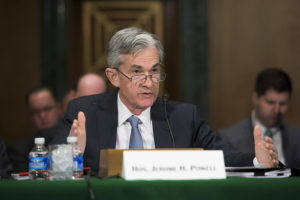
After the Great Recession unleashed never before seen Federal Reserve powers, there seems to be an expectation setting into the mind of markets that not only will the Fed lower rates to meet any new recession, but that it will also deploy extraordinary intervention. At Bloomberg, Brian Chappatta has an idea for the next level of Fed intervention, buying muni bonds. He writes:
Almost 10 years after the Great Recession ended, the growing threat of a new economic slowdown raises a troubling question: When the next recession strikes, what can the world’s central banks do? With interest rates low and their balance sheets still loaded with assets bought to fight the 2008 crisis, do they have the tools to respond? This column is one of five looking at that question.
U.S. state governments suffered major damage from the last recession 10 years ago. During the second quarter of 2009, the final months of the downturn, personal income taxes tumbled 27 percent from a year earlier. At the same time, expenses grew as enrollment for Medicaid and state unemployment insurance soared, while crumbling asset prices suddenly left public pension systems with massive shortfalls relative to their liabilities. In statehouses across the country, money was tight, to say the least. California went so far as to issue IOUs.
Over the past decade, the slow-but-steady economic expansion has covered up these issues, but hasn’t erased them. State government employment remains below its pre-financial crisis peak. Public pension plans are still largely in a sea of red ink, with an overall shortfall of $1.4 trillion at the state level, and even those with an acceptable level of assets are just one bear market away from the brink. And it’s no secret that the U.S. has fallen terribly behind in funding its roads, bridges, airports and public transit systems. The American Society of Civil Engineers estimates the money needed to get infrastructure into an overall “state of good repair” will fall short by $2 trillion over the next several years.
As the Federal Reserve contemplates what the next recession might look like, and what tools it has available to combat it, the fiscal health of U.S. states is likely to emerge as a significant roadblock to any economic recovery. Unlike the federal government, states can’t rely on running persistent budget deficits during a downturn, nor can they rapidly add workers to their payrolls. That means either sharp cutbacks in public services, higher taxes or shortchanging pensions. None of those options will stimulate growth.
The easy answer would be directing more cash from the federal government to the states. But the 2009 stimulus program already transferred an unprecedented amount of money into state coffers and the results were middling at best. In the current political climate, and with U.S. deficits already running close to $1 trillion, it’s anyone’s guess whether a similar package could come together.
Chappatta seems convinced that bailing out the states will mend the next recession. If such a precedent is set, would it mean any time the states were in fiscal trouble they could rely on the Fed to flood the market with electronically printed dollars, lowering the states’ borrowing costs and easing their burden? Setting such precedents shouldn’t be done lightly.
